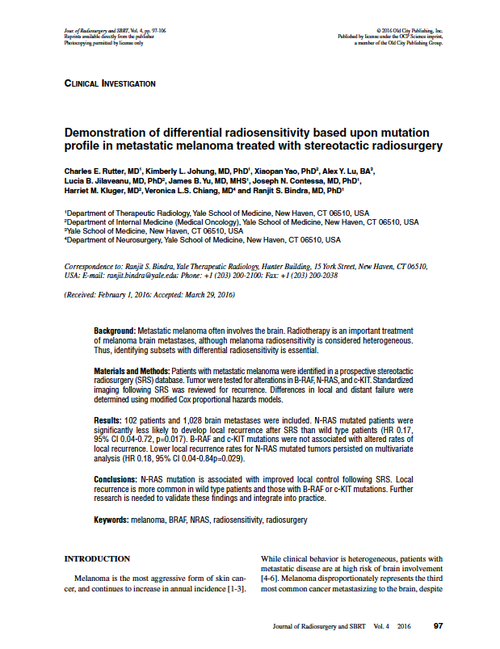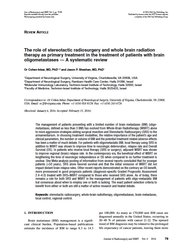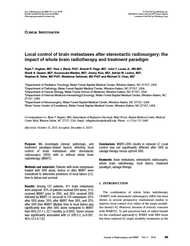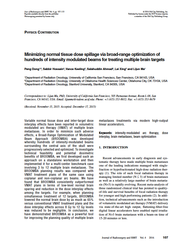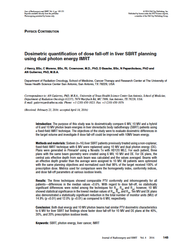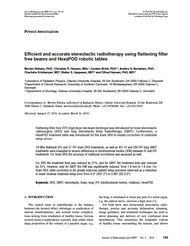- Home
- Journal Contents Downloads
- JRSBRT Downloads
- JRSBRT 4.2, p. 97-106
Product Description
Clinical Investigation
Demonstration of differential radiosensitivity based upon mutation profile in metastatic melanoma treated with stereotactic radiosurgery
Charles E. Rutter, Kimberly L. Johung, Xiaopan Yao, Alex Y. Lu, Lucia B. Jilaveanu, James B. Yu, Joseph N. Contessa, Harriet M. Kluger, Veronica L.S. Chiang and Ranjit S. Bindra
Background: Metastatic melanoma often involves the brain. Radiotherapy is an important treatment of melanoma brain metastases, although melanoma radiosensitivity is considered heterogeneous. Thus, identifying subsets with differential radiosensitivity is essential.
Materials and Methods: Patients with metastatic melanoma were identified in a prospective stereotactic radiosurgery (SRS) database. Tumor were tested for alterations in B-RAF, N-RAS, and c-KIT. Standardized imaging following SRS was reviewed for recurrence. Differences in local and distant failure were determined using modified Cox proportional hazards models.
Results: 102 patients and 1,028 brain metastases were included. N-RAS mutated patients were significantly less likely to develop local recurrence after SRS than wild type patients (HR 0.17, 95% CI 0.04-0.72, p=0.017). B-RAF and c-KIT mutations were not associated with altered rates of local recurrence. Lower local recurrence rates for N-RAS mutated tumors persisted on multivariate analysis (HR 0.18, 95% CI 0.04-0.84p=0.029).
Conclusions: N-RAS mutation is associated with improved local control following SRS. Local recurrence is more common in wild type patients and those with B-RAF or c-KIT mutations. Further research is needed to validate these findings and integrate into practice.
Keywords: melanoma, BRAF, NRAS, radiosensitivity, radiosurgery
 Loading... Please wait...
Loading... Please wait...

